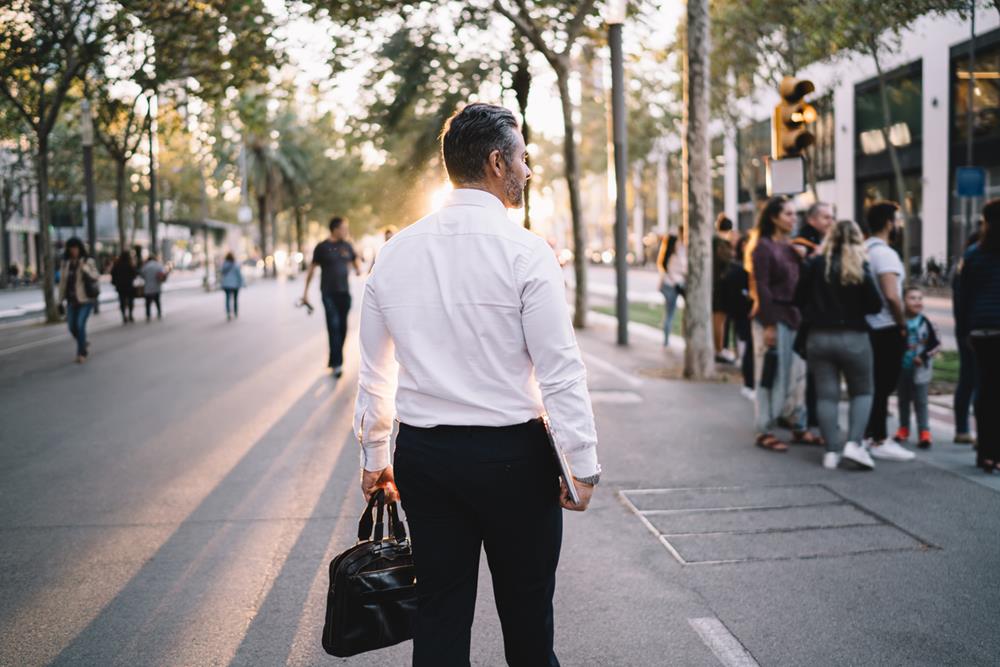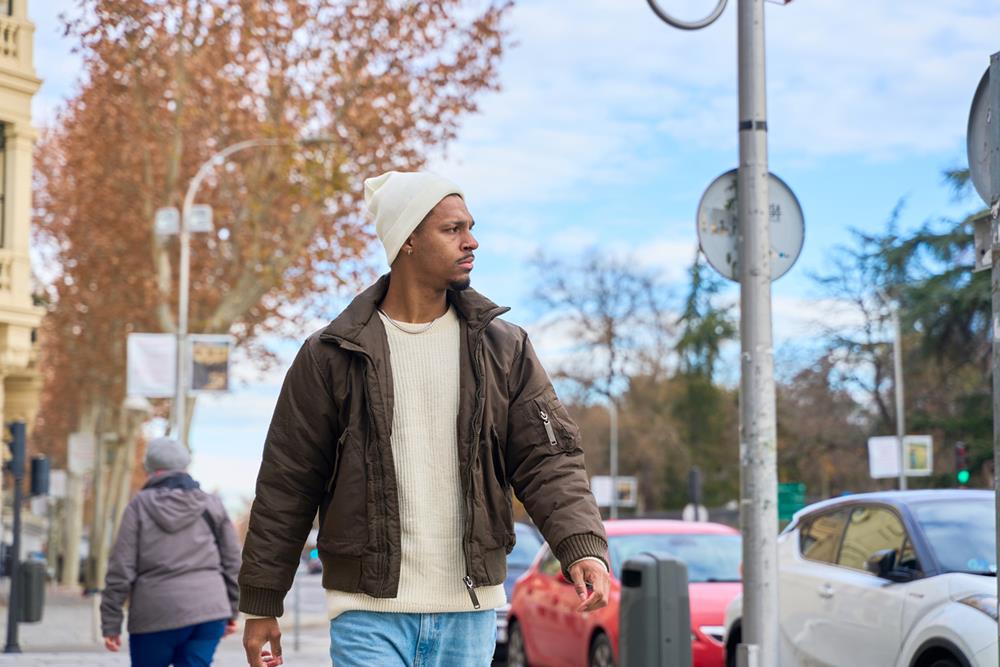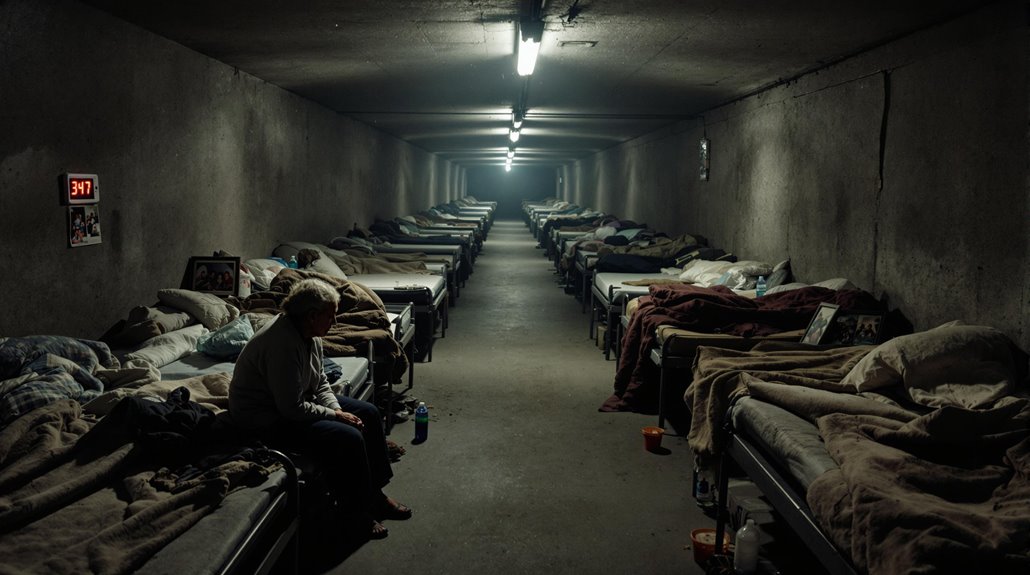Grey Man Theory Explained: How to Stay Invisible in a Crisis

In a crisis situation, standing out can make you a target. That’s where the Grey Man Theory comes in. It’s a survival strategy focused on blending into your surroundings—staying unnoticed, unmemorable, and safe. Whether you're navigating a natural disaster, civil unrest, or a dangerous environment, the ability to go unnoticed can be one of your most powerful tools.
In this article, we’ll break down what the Grey Man Theory is, how it works, and the practical steps you can take to become “invisible” when it matters most.
| Strategy | Description |
|---|---|
| Neutral Clothing | Wear plain, earth-toned clothes with no logos or patterns to avoid standing out. Match local styles for better blending. |
| Controlled Behavior | Remain calm and composed. Avoid sudden movements, excessive eye contact, or any behavior that might draw attention. |
| Situational Awareness | Stay alert without appearing overly watchful. Use peripheral vision to track exits, threats, and changes in your environment. |
| Blending Socially | Engage in casual, non-specific conversation if needed. Avoid revealing details or strong opinions that might make you memorable. |
| Discreet Gear | Carry gear in normal-looking backpacks or containers. Avoid tactical-looking items and minimize noise from accessories. |
| Concealed Preparedness | Hide survival tools within everyday objects or clothing. Items should be easy to access but invisible to others. |
| Movement Techniques | Walk at the pace of the crowd. Move with purpose but not urgency. Avoid stopping suddenly or drawing attention. |
| Adaptability | Change your appearance or behavior based on the crowd and setting. Be flexible and responsive to shifting situations. |
| Practice in Everyday Settings | Hone your Grey Man skills in public areas like malls or transport hubs to make them second nature before a real crisis. |
| Recognizing Baseline Behavior | Observe how people normally act to understand what behaviors will help you blend in and which will stand out. |
Understanding the Gray Man Theory
The Grey Man Theory is a survival concept centered on staying unnoticed in high-risk or chaotic situations. The goal is simple: blend in with your surroundings so effectively that you don’t draw any attention to yourself—physically, behaviorally, or emotionally. In times of crisis, looking unremarkable can help you avoid becoming a target, whether from looters, law enforcement, or panicked crowds.
A key element of this strategy is situational awareness—being alert to your environment without appearing overly observant. This is where the Reticular Activating System (RAS) in your brain plays a role. The RAS helps filter out irrelevant information and focus your attention on what matters, enabling you to remain calm, observant, and ready to act without giving off visible cues of stress or urgency.
To effectively apply the Grey Man Theory, every detail counts:
Clothing should be neutral, low-profile, and suited to your environment. Avoid tactical or flashy gear that might make you stand out.
Gear choices should prioritize functionality and concealment—think discreet backpacks, everyday-carry tools, and subdued colors.
Behavior is just as important. Move with purpose, avoid making eye contact, and match the pace and demeanor of those around you.
Mastering this mindset and method can increase your safety and mobility when it matters most—by helping you disappear in plain sight.
Why Blending In Matters During a Crisis

In the midst of chaos, drawing attention to yourself can be dangerous. That’s why blending in—central to the Grey Man Theory—is a powerful survival strategy. By staying low-profile, you reduce the risk of becoming a target for theft, aggression, or unwanted questions.
Remaining unnoticed allows you to move through crowds, access resources, or evacuate without interference. It also helps you maintain control and avoid panic, which is crucial when public order is breaking down.
Importantly, blending in isn’t just about self-preservation. It also allows you to help others discreetly. By keeping your survival skills, gear, and resources hidden, you can provide support without putting yourself—or those around you—at greater risk. In high-stress situations, calm, quiet action often goes further than standing out.
Consider assessing the type and severity of the emergency when deciding how best to blend in during a crisis.
Key Characteristics of a Gray Man

A Grey Man is someone who deliberately avoids standing out in a crowd, especially during emergencies or high-risk situations. The goal is to remain completely unremarkable—physically, behaviorally, and emotionally—so you can move unnoticed through chaos or conflict. Here are the key traits and tactics that define a true Grey Man:
Neutral Appearance
Wear clothing that’s plain, practical, and free of logos, bright colors, or military-style patterns. Earth tones, grays, and common streetwear styles help you blend in with the average crowd. Your goal is to be forgettable at a glance.Controlled Behavior
Stay calm and composed, even when others panic. Avoid fidgeting, rushed movements, or anything that looks out of place. Use normal body language and light, casual conversation if needed to avoid suspicion. Too much or too little eye contact can be a red flag—moderation is key.Situational Awareness
A Grey Man is always alert without appearing on edge. Scan your surroundings subtly and adjust your pace, posture, and behavior to match the people around you. This helps you stay in sync with the environment and avoid drawing attention.Concealed Preparedness
Carry your survival tools in everyday items like common backpacks or messenger bags. Tactical gear should be hidden or disguised so it doesn’t give away your readiness or invite questions.Adaptability
Whether you're in a city, airport, or disaster zone, blending in means adapting to different crowds and behaviors. In urban crises—where emergency services may be overwhelmed—appearing as just another person helps you move safely and avoid becoming a target.
Mastering these traits allows you to navigate dangerous situations with less risk and more control, making the Grey Man approach a valuable skill in your survival toolkit.
Mastering the Art of Disguise and Movement

When it comes to being a Grey Man, subtlety is your strongest asset. The goal is to avoid standing out in any way—through appearance, behavior, or movement.
Dress to Blend In
Choose clothing that’s plain, average, and seasonally appropriate. Neutral tones like gray, navy, or earth colors help you disappear into your environment. Avoid tactical gear, flashy logos, or anything that attracts attention.Move with Purpose
In crowded areas, walk confidently but not urgently. Match the pace and body language of those around you to avoid looking suspicious or anxious. Sudden stops or erratic movements can make you stand out, so maintain steady, natural motion.Maintain Situational Awareness
Stay alert without looking alert. Use your peripheral vision to scan for exits, threats, or unusual activity. Avoid staring or excessive head-turning—your awareness should be subtle and continuous.Blend Socially
If someone engages you in conversation, respond naturally. Keep small talk simple and avoid controversial or detailed topics that might draw interest or attention. The goal is to be forgettable—not suspicious or overly guarded.Practice in Everyday Life
Public spaces like malls, train stations, and busy streets are perfect for honing these skills. The more you practice blending in during normal situations, the more natural it will feel during a crisis.
Over time, these habits become second nature, allowing you to stay unnoticed and maintain control when it matters most.
Dressing the Part: Clothing and Accessories

Although fashion might often be seen as a form of self-expression, in the domain of the Grey Man Theory, it serves a more strategic purpose. Dressing the part means selecting clothing and accessories that help you blend in seamlessly.
Opt for neutral tones and earthy colors, avoiding patterns or bright hues that could draw attention. Your attire should be average and comfortable, free from logos or emblems that might make you memorable.
To maintain a low profile, consider these tips:
- Choose discreet everyday carry bags, like backpacks or messenger bags.
- Conceal tactical items within ordinary-looking clothing or compartments.
- Avoid shiny accessories; prefer muted finishes to avoid attention.
- Align your style with the local aesthetic to blend in effortlessly.
Carrying Gear Without Drawing Attention
One of the core principles of the Grey Man approach is staying prepared without appearing prepared. The way you carry your gear should be as discreet as possible, helping you blend in effortlessly with those around you.
Organize for Speed and Subtlety
Use compartments and pouches to organize essential items for quick, quiet access. Items like multitools, flashlights, or first aid supplies should be easy to reach but well-hidden within your bag.Conceal Tactical Gear Smartly
Carry survival or tactical items in everyday containers, like pencil cases, sunglass holders, or inside jacket linings. This keeps your preparedness invisible to casual observers.Minimize Noise
Make sure your gear is packed securely to avoid rattling, clinking, or zipper noise. Quiet movement is part of staying unnoticed, especially in tense or chaotic situations.
By keeping your gear low-profile and your appearance unremarkable, you’ll stay ready without raising any red flags—an essential part of mastering the Grey Man strategy.
Enhancing Situational Awareness and Adaptability

Blending in is about how you read and respond to your environment. Developing strong situational awareness and adaptability is crucial to fully embracing the Grey Man mindset.
Recognize Baseline Behavior
Pay attention to how people typically act in a given setting. Noticing what's "normal" helps you quickly identify anything unusual or potentially threatening—and lets you mirror expected behavior.Mimic Normalcy
Dress and act in a way that matches your surroundings. Use neutral body language, avoid abrupt movements, and move at the general pace of the crowd to stay unnoticed.Practice People-Watching
Spend time observing how different groups behave in places like malls, parks, or public transit. Take note of clothing styles, walking patterns, and conversational tones. This sharpens your ability to blend into unfamiliar environments.Adapt in Real Time
Situations can shift quickly, especially in a crisis. Stay flexible. Whether it’s changing your route, adjusting your demeanor, or swapping out visible gear, quick adaptation helps you stay ahead without standing out.
By combining awareness with adaptability, you’ll be able to stay in control, avoid detection, and make smarter decisions—no matter how unpredictable the situation.




